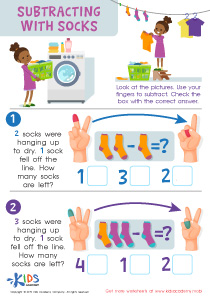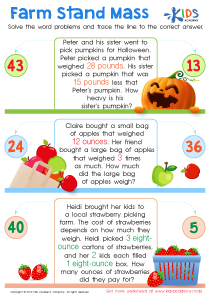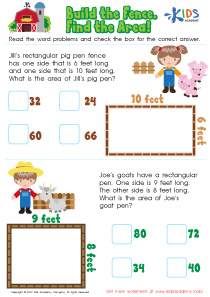Education and Interactive Money Word Problems Worksheets With Answers for Grade 3
3 filtered results
-
From - To
Answer Keys for Money Word Problems Worksheets for Grade 3
Introducing our Money Word Problems worksheets, expertly crafted for Grade 3 students! These Homeschool interactive worksheets are designed to engage young learners in the practical application of math skills through realistic money scenarios. Whether it's calculating change, budgeting for small purchases, or understanding the basics of currency, these worksheets make learning fun and relevant. Each sheet is filled with vibrant, thought-provoking problems tailored to help children master the art of handling money with confidence. Perfect for homeschool settings, they encourage independent learning and critical thinking in everyday financial situations. Equip your child with the skills to thrive in a money-smart future!
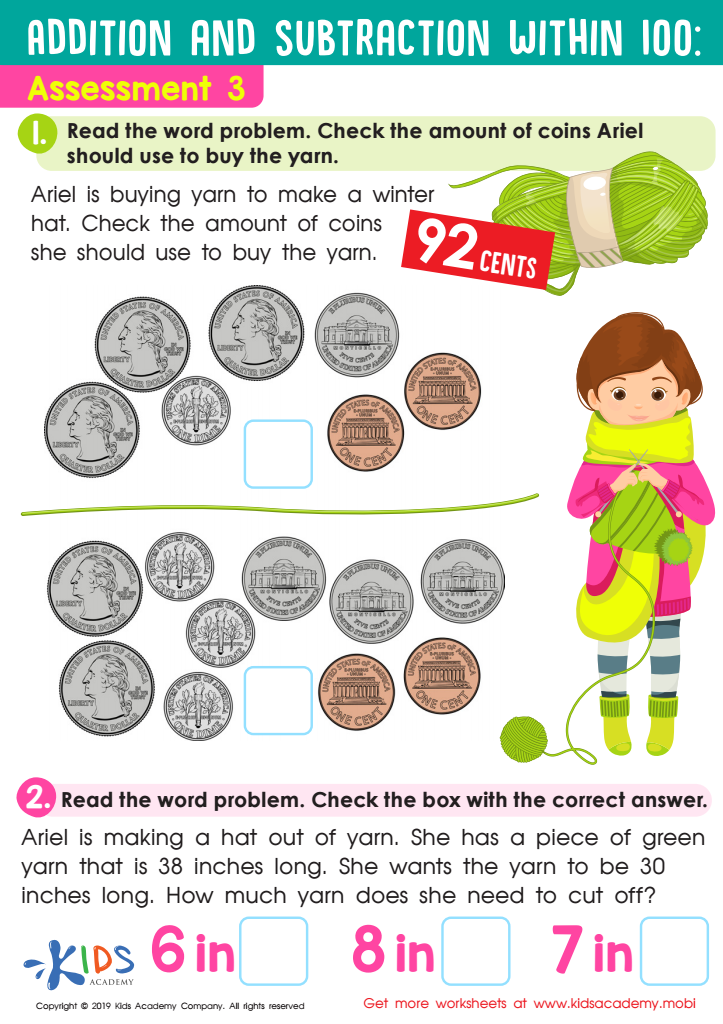

Assessment 3 Math Worksheet
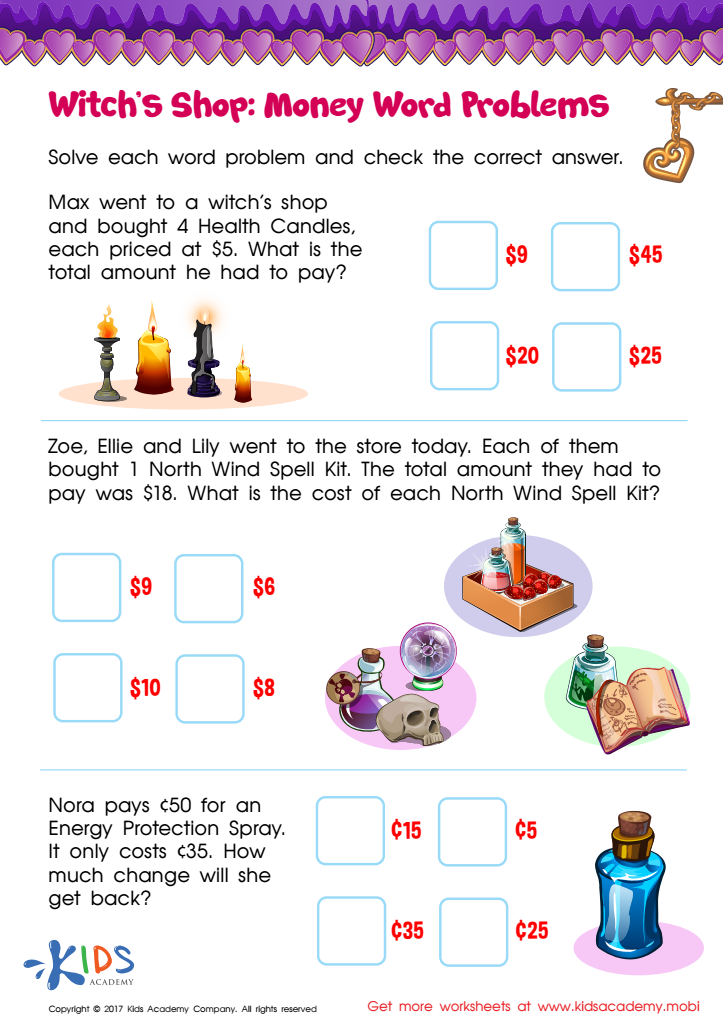

Money Word Problems Printable
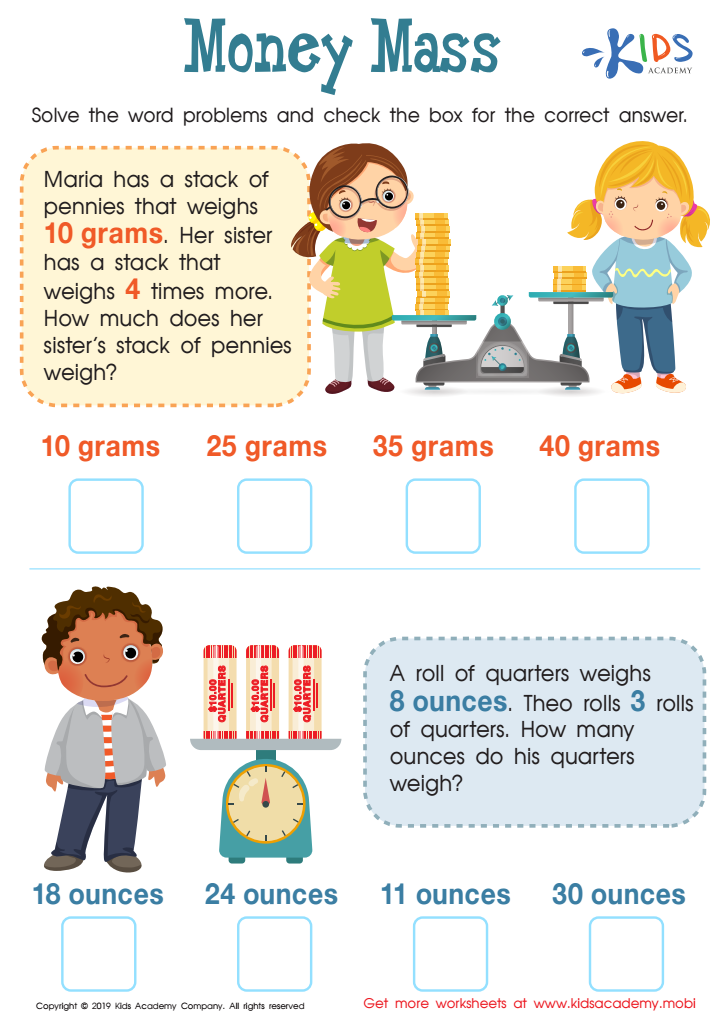

Money Mass Worksheet
The Value of Money Word Problems: Harnessing Homeschool Interactive Printables for Grade 3
In the journey of elementary education, teaching children the basic concepts of money not only prepares them for everyday interactions but also lays a foundational understanding of broader mathematical and economic principles. For third graders, integrating money word problems through homeschool interactive printables offers a practical, engaging, and effective method of learning. These resources are particularly beneficial in homeschool environments where parents and educators strive to combine educational rigor with personalized learning experiences.
Why Focus on Money Word Problems?
Money word problems are practical applications of mathematics that children encounter almost daily. By the age of eight or nine, children in Grade 3 begin to understand the value of money, making it an ideal time to introduce them to simple financial concepts through real-life scenarios. Money word problems help children practice basic arithmetic operations like addition, subtraction, multiplication, and division within contexts that make sense to them, such as shopping, saving, and making change.
Moreover, word problems enhance critical thinking and problem-solving skills. Unlike straightforward calculation exercises, word problems require students to read, comprehend, and decide the mathematical operations needed to arrive at a solution. This not only reinforces their math skills but also improves their reading comprehension and analytical thinking.
The Role of Homeschool Interactive Printables in Learning
Homeschool interactive printables are particularly well-suited for teaching money word problems. These printables are designed to be engaging, often featuring colorful layouts, interactive elements like cut-outs or flaps, and sometimes digital components that can be accessed via a computer or tablet. Here’s why they are an essential tool for homeschooling parents:
-
Customized Learning: Homeschool environments thrive on the ability to tailor educational content to a child’s specific learning pace and interests. Interactive printables can be chosen based on the child’s proficiency level and preferred learning style, whether they are visual learners, kinesthetic learners, or something in between.
-
Hands-On Engagement: Many children learn best through doing. Interactive printables often require children to engage physically with the material, whether by moving pieces around, filling out sections, or even using the printables as a basis for a shopping game with play money. This hands-on approach helps solidify learning through active participation.
-
Instant Feedback: Some interactive printables include elements that allow for instant feedback, such as QR codes that can be scanned to check answers or interactive elements that can be manipulated on a screen. Immediate feedback helps keep children engaged and allows them to learn from their mistakes in real time, thereby enhancing the educational experience.
-
Reusability: Homeschool interactive printables can often be used multiple times in various ways. For example, they can be laminated for use with dry-erase markers, allowing children to practice problems repeatedly. This reusability makes them a cost-effective resource for homeschooling families.
-
Integration with Other Subjects: Money word problems can be easily integrated with other areas of study such as social studies, where children might learn about the economy, or science, where they might explore the materials used to make coins and bills. This interdisciplinary approach helps children see the connections between different fields of knowledge and understand how they apply to real-life situations.
Conclusion
Money word problems are more than just math exercises; they are a bridge to understanding the world. For third graders, especially those in a homeschool setting, incorporating these problems through interactive printables can make learning both fun and impactful. These resources equip children with not only math skills but also life skills that prepare them for future financial decisions. By engaging with these practical, hands-on tools, children develop a deeper understanding and appreciation of both mathematics and the everyday use of money, setting a strong foundation for their educational journey ahead.
 Assign to My Students
Assign to My Students






